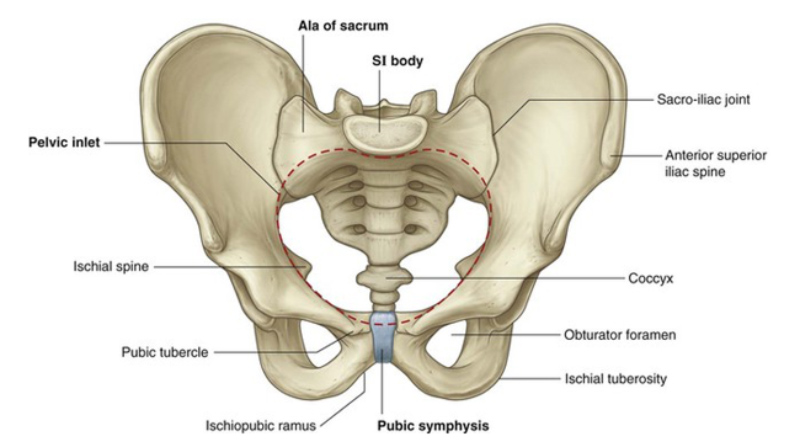You may have heard a lot of people talk about how important it is to do pelvic floor exercises. But do you actually know exactly what your pelvic floor is and why it is so important for both women and men?
Anatomy of the Pelvic Floor
Our pelvis is made up of 3 separate bones; the sacrum (tailbone) and 2 innominates or hip bone, which all join together to form a ring shape.
 The pelvic floor is a group of muscles that attaches to the tailbone at the back and to the pubic bone at the front of the pelvis. It acts as a sling or hammock to hold and support the organs in the pelvis, which include the bladder, the uterus (in women) and the bowels.
The pelvic floor is a group of muscles that attaches to the tailbone at the back and to the pubic bone at the front of the pelvis. It acts as a sling or hammock to hold and support the organs in the pelvis, which include the bladder, the uterus (in women) and the bowels.
These organs have openings that come through the pelvic floor muscles. From the bladder, the urethra passes through the pelvic floor to allow urine to be excreted. From the bowel, the anus or rectum passes through to allow the passing of faeces. In women, the vagina passes through the pelvis floor, which is very important during childbirth.
With all of these openings coming through these muscles you can imagine how important it is to have a healthy, well functioning pelvic floor.
What does the Pelvic floor do?
The pelvic floor is a very strong group of muscles, which helps support and hold up the pelvic organs, against the forces of gravity. It is also very important in the ability to control our bowel and bladder functions. When we need to go to the toilet, we use our pelvic floor muscles to either ‘hold on’ or ‘let go.’
Problems or Weakness of the Pelvic Floor
The pelvic floor muscles are just like any of the other muscles in our body; they need to be strong and well conditioned so they can function effectively. Just the same as our leg muscles needing strength to run and jump, or our arm muscles needing strength to lift and carry things, the pelvic floor is no different.
There are a number of causes for pelvic floor weakness including childbirth, excessive straining in constipation, ageing, repetitive heavy lifting or being overweight.
There are two main problems that can occur when our pelvic floor muscles become weak:
- Incontinence
- When someone loses the ability to control when they urinate or use their bowels, this is called incontinence. People may have leakage, and struggle to maintain control when they go to the toilet.
- Prolapse
- When one of the pelvic organs (bladder, vagina, uterus or bowel) begin to slip downwards, and can sometimes protrude out through the pelvic floor. This can become very uncomfortable and cause lots of pain and functional problems.
How can I strengthen my Pelvic Floor?
There are a number of exercises and tools that can help with pelvic floor strength and to reduce incontinence symptoms. It can sometimes be difficult to correctly activate the specific muscles, so it is recommended to see a health professional who can advise how to do these exercises correctly.
Ensuring that there are no imbalances throughout the pelvis and the lower back will also help with any pelvic floor problems.

